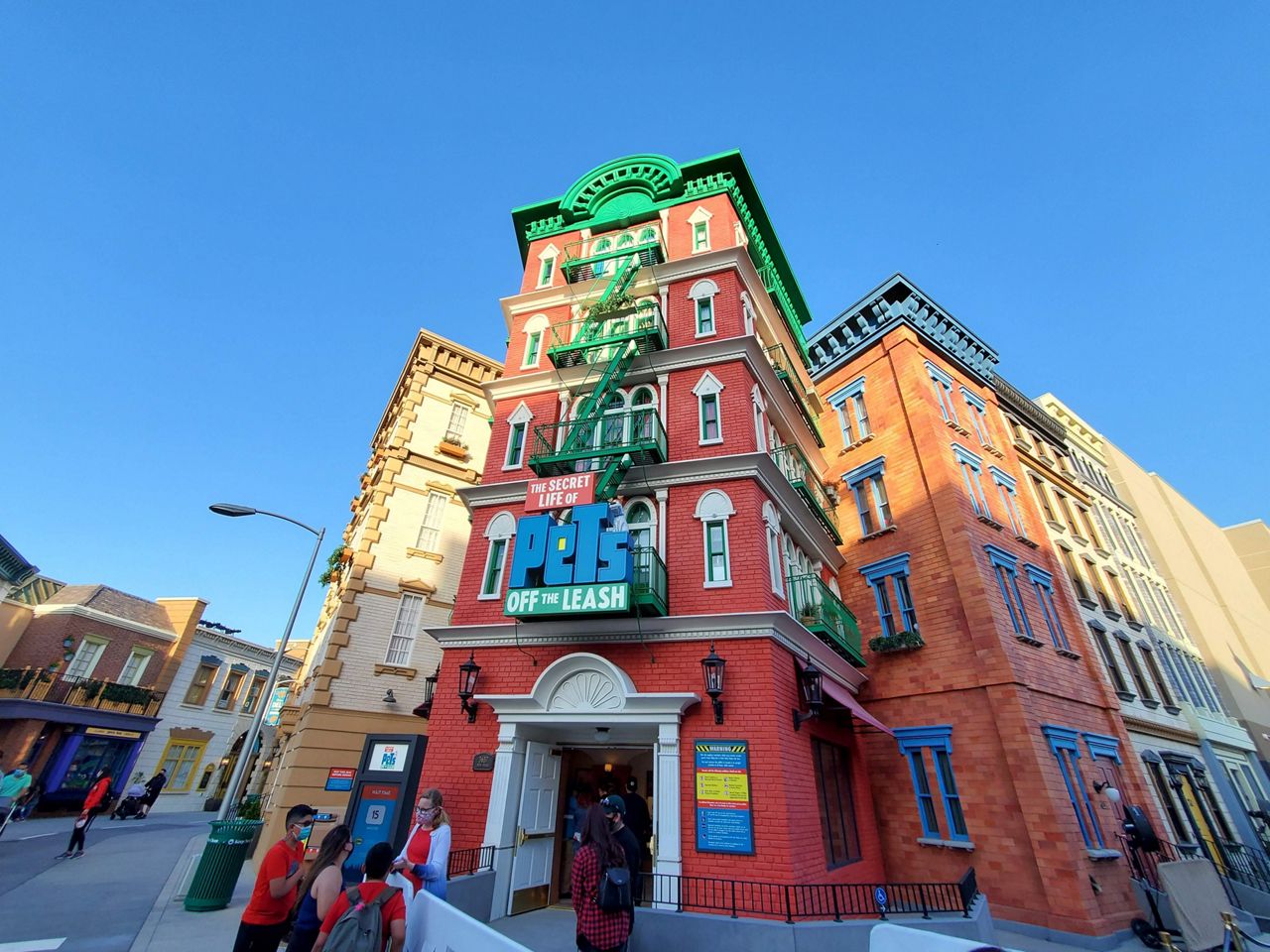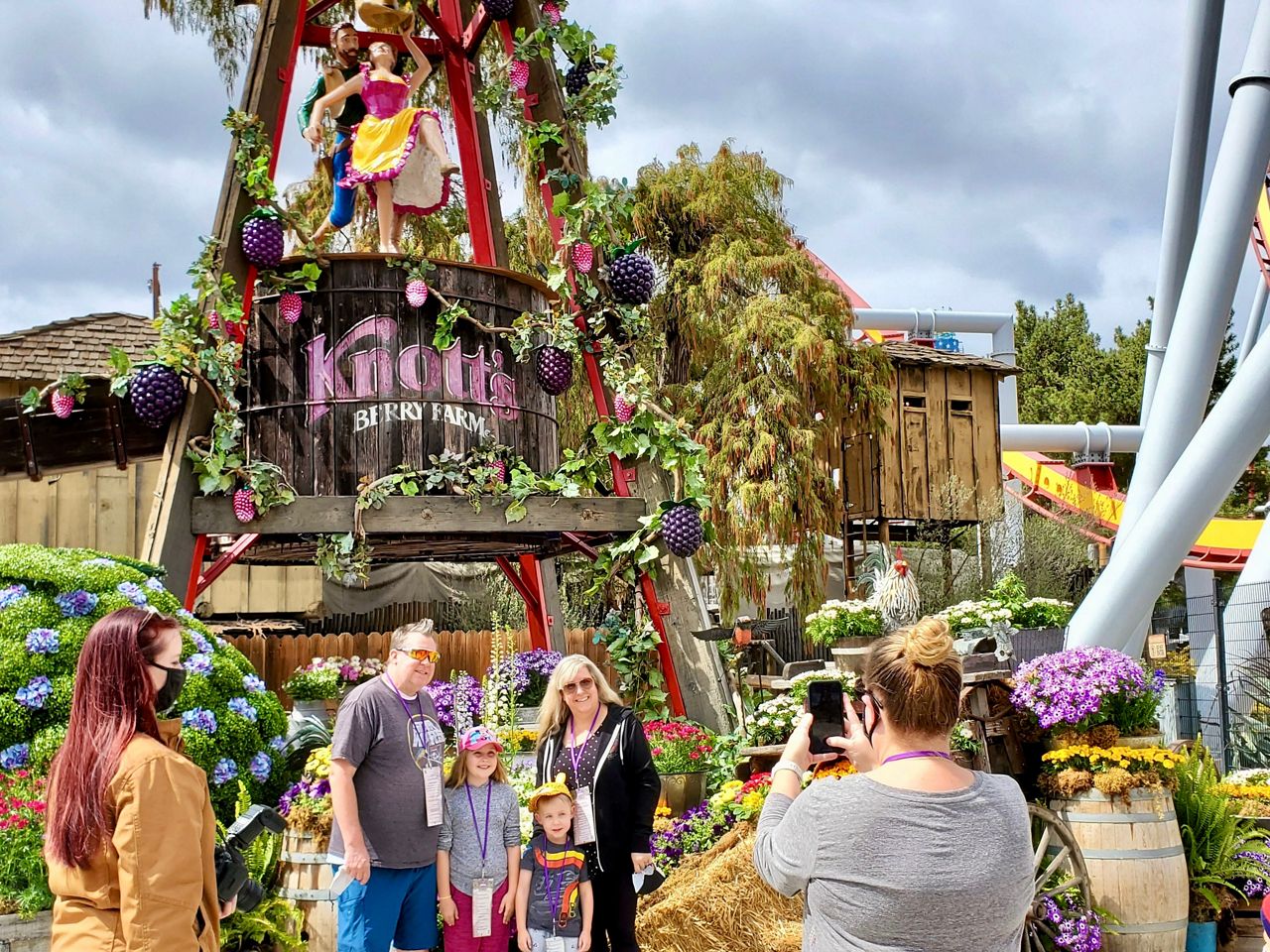ANAHEIM, Calif. — After coronavirus pandemic related-restrictions closed theme parks across the state in 2020, high pent-up demand and marketing to locals brought visitors back to Disneyland, Universal Studios Hollywood and Knott's Berry Farm during a rebound year.
The Themed Entertainment Association and AECOM released their annual themed index attendance report on Friday. They found that Southern California theme parks fared well despite state-level closures, self-imposed capacity limits, little international tourism and other restrictions.
The report also found that when Southern California theme parks finally reopened, even with capacity limits, people came in droves.
According to the TEA report, Disneyland attracted more than 8.5 million visitors last year, a 133% increase from 2020 when the coronavirus pandemic closed all theme parks in the state. Disney California Adventure brought in 4.9 million visitors in 2021, up 159% from the previous year’s 1.9 million.
Meanwhile, Universal Studios Hollywood’s attendance was at 5.5 million, a 324% year-over-year. Knott’s Berry Farm brought in 3.6 million and Six Flags Magic Mountain 3 million, an increase of 354% and 344%, respectively. SeaWorld San Diego brought in 2.8 million visitors, a 146% jump from 2020.
However, the 2021 attendance numbers are still a far cry from the number of visitors they attracted pre-pandemic.

In 2019, Disneyland, for example, had more than 18.6 million visitors, Disney California Adventure had 9.8 million and Universal Studios Hollywood posted 9.1 million visitors, the report states.
Still, given the number of government restrictions theme parks had to follow in California, few to no international tourism in 2021, and having to re-hire and re-train a labor force, theme parks did well, TEA/AECOM analysts said in their report.
“[The year] 2021 got off to a rocky start for theme park attendance as some parks were closed and others operated under government- or self-imposed capacity restrictions,” wrote Francisco Refuerzo, senior economics analyst at AECOM, in the report. “But attendance accelerated quickly around the start of the summer season, and by the last quarter of 2021 some park operators were reporting attendance that reached pre-pandemic levels.”
Refuerzo did not return a Spectrum News request for more information as of press time.
Disneyland officials declined to comment on the report.
Universal Studios Hollywood officials said they are thrilled people are enjoying the park but declined to comment on attendance numbers.
Knott’s did not return a Spectrum News message for comment.
Theme parks don’t usually publicly announce their annual attendance figures.
The Themed Entertainment Association and AECOM, which have released these reports for 16 years, use various sources to gather the numbers. TEA/AECOM officials said they dig through company financial reports, talk to the investment banking community and local tourism organizations, and gather professional estimates and other sources.
The report comes as theme parks across the state continue to rebound from the pandemic that shuttered their business for most of 2020, beginning in mid-March.
As part of an effort to slow the spread of the coronavirus and later push the vaccine, Gov. Gavin Newsom had initially closed theme parks under the state’s Blueprint for a Safer Economy plan that dictated the type of business open or closed based on a county’s COVID-19 transmission level.
It wasn't until April that Newsom allowed theme parks to reopen under the plan but limited capacity to in-state residents and county health tier level.

Theme parks such as Disney California Adventure, Knott's Berry Farm, Universal Studios and Six Flags Magic Mountain had to get creative and find ways to circumvent Newsom's orders.
Through the latter half of 2020 and early 2021, several theme park operators hosted a series of “Taste of” events that allowed customers to visit their theme parks for a retail and outdoor dining experience. Rides and other attractions were closed.
Six Flags hosted drive-thru events.
Refuerzo, one of the report’s authors, said that during this time, operators “placed extra emphasis on their local markets, an effort to build a lucrative base of repeat visitors.”
“In some ways, the pandemic strengthened theme parks as a regional destination, a nostalgic, affordable and safe, outdoor alternative to destinations that require traveling,” he added.
Theme park operators also relied heavily on technology, implementing an advanced reservation system, mobile dining orders, touchless payment, virtual queues and other tech innovations.
“Though parks were already heading in this direction, the pandemic accelerated the trend,” said Refuerzo.
Refuerzo noted that despite 2021’s lower attendance levels than 2019, most theme park operators reported increased revenues “and in some cases, surpass equivalent quarters from 2019.”
“Financial reports indicated dramatic increases in per capita spending at 19 of the top 20 North American parks,” he said. “The increase was in part due to pent-up demand from park closures during the pandemic, increased savings from less travel and entertainment costs.”



